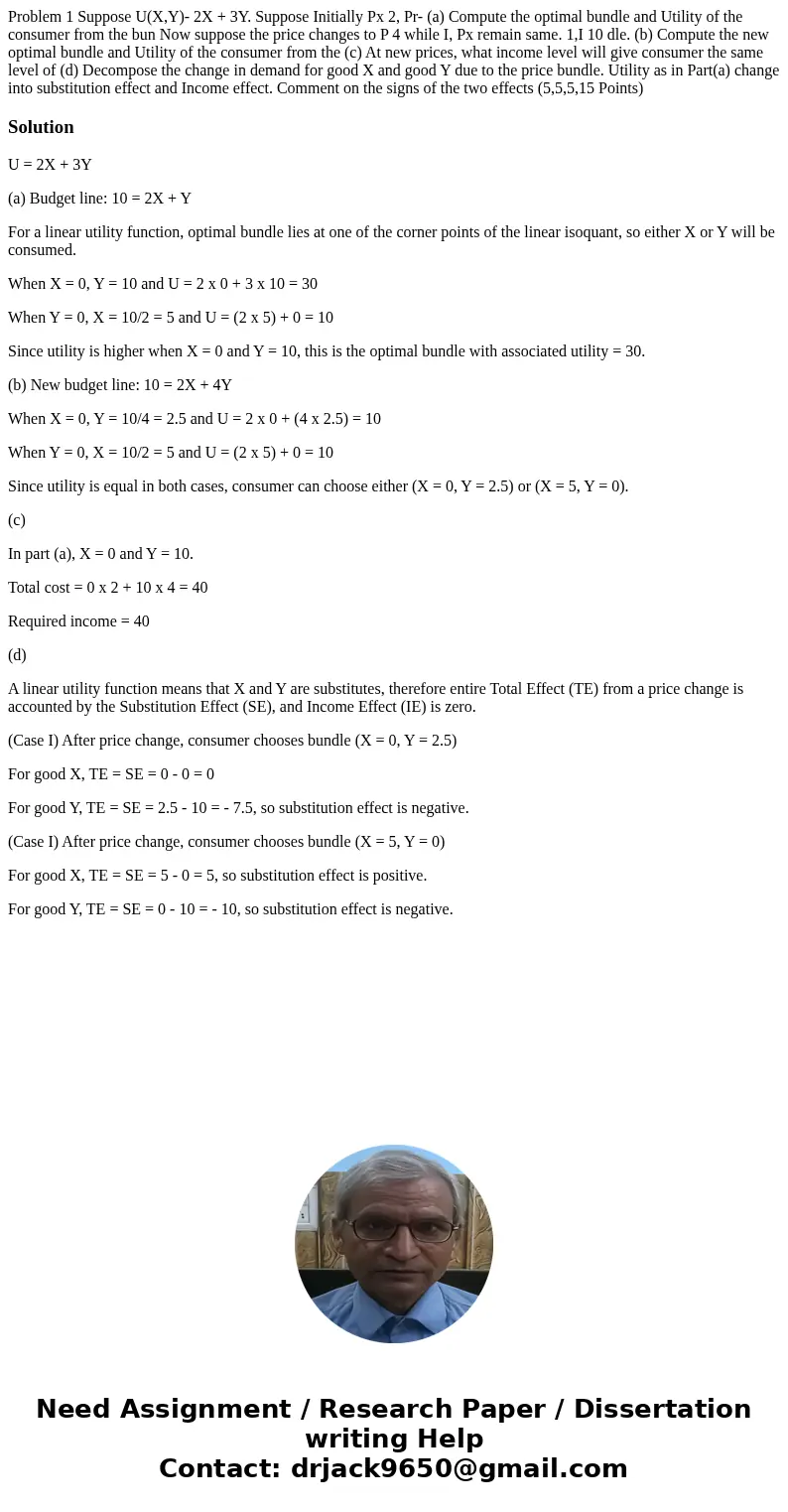Problem 1 Suppose UXY 2X 3Y Suppose Initially Px 2 Pr a Com
Solution
U = 2X + 3Y
(a) Budget line: 10 = 2X + Y
For a linear utility function, optimal bundle lies at one of the corner points of the linear isoquant, so either X or Y will be consumed.
When X = 0, Y = 10 and U = 2 x 0 + 3 x 10 = 30
When Y = 0, X = 10/2 = 5 and U = (2 x 5) + 0 = 10
Since utility is higher when X = 0 and Y = 10, this is the optimal bundle with associated utility = 30.
(b) New budget line: 10 = 2X + 4Y
When X = 0, Y = 10/4 = 2.5 and U = 2 x 0 + (4 x 2.5) = 10
When Y = 0, X = 10/2 = 5 and U = (2 x 5) + 0 = 10
Since utility is equal in both cases, consumer can choose either (X = 0, Y = 2.5) or (X = 5, Y = 0).
(c)
In part (a), X = 0 and Y = 10.
Total cost = 0 x 2 + 10 x 4 = 40
Required income = 40
(d)
A linear utility function means that X and Y are substitutes, therefore entire Total Effect (TE) from a price change is accounted by the Substitution Effect (SE), and Income Effect (IE) is zero.
(Case I) After price change, consumer chooses bundle (X = 0, Y = 2.5)
For good X, TE = SE = 0 - 0 = 0
For good Y, TE = SE = 2.5 - 10 = - 7.5, so substitution effect is negative.
(Case I) After price change, consumer chooses bundle (X = 5, Y = 0)
For good X, TE = SE = 5 - 0 = 5, so substitution effect is positive.
For good Y, TE = SE = 0 - 10 = - 10, so substitution effect is negative.

 Homework Sourse
Homework Sourse